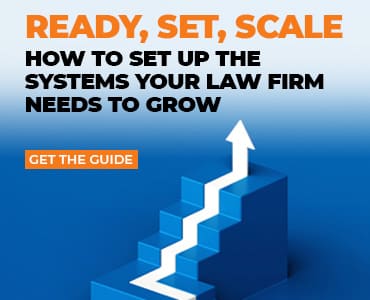Referrals are the Holy Grail of the legal services world. What could be better than having someone endorse you and encourage a potential client to contact you? Yet when it comes to how to stimulate referrals — or even how to make one yourself — there must be a fair amount of confusion. Otherwise, why would it be one of the most frequently appearing topics, not only in legal business development channels, but all business channels?
Those who know me won’t be surprised to read that I disagree with most of the published advice. Recognizing that the worst vice is “advice,” here’s how I believe you can make the referral process work for all concerned.
Barriers to Being Referred
Why do even completely satisfied clients fail to refer others to us?
1. They don’t think of it.
2. There’s nothing in it for them.
3. They fear that “sharing” us may diminish our availability to them.
4. They don’t know who we’d like referred to us.
5. We don’t ask.
How can we motivate clients to refer new prospects at every opportunity? First, ask yourself, “Why should they refer someone to me? What’s in it for them?”
The simplest answer is that people like to help. It’s human nature. If we so much as mention that we’ve had difficulty with car repair, child care or business problems, our friends and professional associates rush to offer helpful resources. The “source” looks good to the referral recipient — he will have helped solve a problem. Needless to say, the source looks good to you.
Post-engagement Review as a Doorway to Referrals
This is a graceful way to let clients remind themselves of the importance of the problem you solved for them, the value they received, and how much they appreciated your help. Immediately following the successful conclusion of the matter or engagement, schedule a post-engagement review call to capture the lessons learned so you can do an even better job in the future. (That’s “what’s in it for them.”)
Here’s how to segue from the review conversation into referrals:
1. Ask your client, “How well did we solve your problem?” The first answers you get will be pretty general (e.g., “great job”). Ask, “What did we do well?” Be prepared to prompt the client for specifics. Naturally, also ask, “Where can we improve?” Refine that answer with “How?” or “In what specific way?”
2. “What did you like best about working with us?” You may want to set this up with, “We’d like to make sure to repeat any practices you particularly enjoyed, and avoid others you didn’t like as much.” Again, be prepared to prompt the client for specifics drawn from your own observations of the engagement.
3. Observe aloud that “It seems like other [same type] companies like yours would face [the problem you solved], too.” This is particularly effective if solving it for others in the same industry wouldn’t convey any competitive disadvantage to your client.
4. Now say, “We learned a lot about this problem working with you, and we think it’s prudent that we understand it as thoroughly as possible. Who among your business contacts might be willing to give me 20 minutes by phone to offer an informed opinion about this issue?” The conditional “might” is very important, because it makes the question easier to answer. Nobody knows for sure who’ll be willing to talk with you. You’re only asking who they know that belongs to the class of companies logically affected by the problem. Unless the people your client knows are complete outliers, they’ll likely face the same challenges as others in their industry. Keep your question broad. The narrower your question, the more people they’ll mentally screen out.
5. Write down referred names without interruption. If you’ve succeeded in getting them to think broadly, don’t limit it by interrupting them.
6. Ask, “Anyone else?” Surprisingly, people subconsciously “ration” referrals. This two-word question eliminates that.
7. Confirm the spelling of all names, and get companies, titles and contact info. Sometimes people have moved on. If you have to Google them to find them, misspellings will waste time unnecessarily.
8. “What made you think of [name No. 1]?” This answer virtually writes your voice mail script: “So-and-so suggested I call. He/she thought that you [source’s reason for referring].”
9. Continue down the list. Ask, “What made you think of…” for each name. Then ask, “Who would you suggest I contact first?” Why not start with the most receptive person?
10. “Would it be an imposition to ask you to send an email introducing me to these folks?” Nobody will resent the request. Its emphasis on the source’s importance is flattering, particularly if we preface our request with a light, “I’m sure these people are as busy as you are. They don’t know me; they’ll certainly open your email before mine.”
11. Establish a deadline. “I don’t want to try to contact [name] before they’ve seen your email introduction. After what date should I contact them to make sure you’ve had time to make the introduction?” Phrased this way, your sources will set a deadline for themselves, and you’ll never have to wonder, “Is it too soon? Should I wait?”
12. “How might I help you?” Introduce the idea that you might stumble across something of use to this person, and you want to keep your ears open. “As I’m talking with people, I’d hate to overlook information or industry intelligence that’s useful to you simply because I don’t know what to listen for. What kind of information is of value to you?”

















